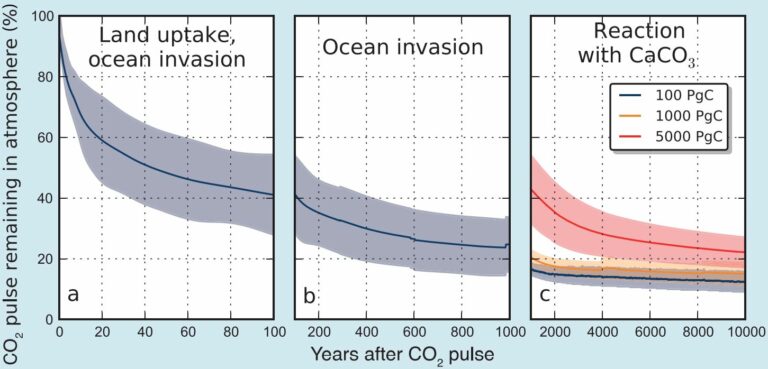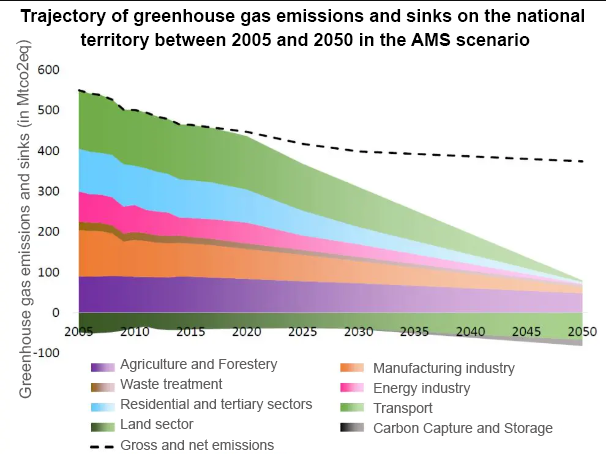Let's talk about Carbon Neutrality !
Let’s talk about it because carbon neutrality is the goal of many states involved in the fight against global warming. It is also the goal of more and more companies.
Let’s talk about it because, in order to bring order to corporate carbon neutrality communications, on 13 April 2022, Decree No. 2022-539 came into force. And, it concerns important issues such as carbon offsetting and carbon neutrality claims in advertising.
Finally, let’s talk about it because we notice that the subject of climate change and carbon neutrality is becoming more and more important in society.
The aim of this article is to link the state of scientific knowledge on this subject with implementation methods for society.
This article aims to answer several questions:
- What are the consequences of global warming?
- How can global warming be limited?
- What is the link between carbon neutrality and global warming?
- How can an organisation achieve carbon neutrality?
What are the consequences for a world heated by +1.5°C, +2°C, +4°C?
Global warming has reached +1.1°C for the decade 2010 compared to the baseline of the period 1850-1900. This increasing warming is bringing its own (increasingly visible) consequences.
We have seen fire episodes in Australia, California, Canada and around the Mediterranean in the summer of 2021. France is experiencing its driest years with successive records in 2018, 2019, 2020 and 2022. In spring 2022, 20% of French departments were already under drought alert. We have also seen the strong heat wave experienced by Pakistanis and Indians from the beginning of May 2022.
All of these events have an element of meteorological randomness. It is therefore difficult (but not impossible) to say that these events are necessarily linked to ongoing global warming. Attribution science makes this link by establishing, for example, that “the early heat wave in India and Pakistan is 30 times more likely due to climate change”.
Global warming increases the probability of occurrence of extreme weather events (droughts, heat waves, floods, etc.)
Attribution science gives probabilities of occurrence of events made possible by global warming. Equivalent work is being done by scientists on future warming scenarios. The IPCC summarises this work in the two infographics below.
The comparison is made on 4 types of events: decadal heat waves, mid-centennial heat waves, heavy precipitation events and agricultural and ecological droughts.
How to limit global warming?
As global warming poses a number of challenges to the livability of our planet, it is desirable to limit this warming. There are several ways of doing this: either by attempting to cool the Earth’s climate through geo-engineering techniques, or by reducing warming by limiting the additional greenhouse effect brought about by the GHG emissions of human activities.
As the first technique is highly questionable for the additional consequences it has on the planet (governance management, climatic consequences, loss of blue sky), we will only mention the limitation of the additional greenhouse effect.
Warming is correlated with the amount of GHGs in the atmosphere
The Earth’s atmosphere acts like a garment for the planet Earth. It reflects the Earth’s heat back to the Earth to prevent heat loss to space. This natural phenomenon is caused by water vapour.
Since the industrial revolution, human societies have been releasing other greenhouse gases into the atmosphere in significant amounts. As a result, the atmosphere is becoming “thicker” and reflecting more and more heat back to the earth’s surface. We have added a few jumpers to our planet.
This comparison with the thickness of clothing can be seen in the graph below. On the x-axis is the cumulative amount of CO2 and on the y-axis the associated warming. The greater the emissions, the greater the warming.

Why aim only at limiting global warming?
Over the past 120 years, the planet has warmed by 1,1°C due to greenhouse gases in the atmosphere. These gases are in the atmosphere for a period of time that exceeds our-decision making scales
The graph below shows a model of the residence time of a CO2 surplus in the atmosphere. After 100 years, the surplus is 40%. After 1,000 years it is 20% and after 10,000 years it is about ten percent. Here we can see the time scales at work in the global warming process.

This graph shows that if humanity stopped all CO2 emissions, the concentration of CO2 in the atmosphere would decrease by 40% in 20 years and by a further 20% in the following 80 years. The process of climate change is therefore a long-term one.
It is worth noting that the time horizons that define the earth’s climate are well over a millennium. Whereas the political time horizons of our societies rarely exceed a decade.
Aiming to limit global warming therefore implies progress for our societies. Indeed, this implies planning our societal organisation over a century. The reduction of global warming will then be organised over the following centuries.
However, between the current situation and the situation where humanity no longer emits CO2, there is a middle ground. A position of equilibrium where human societies emit as much CO2 as they take out of the atmosphere in the long term. This is carbon neutrality.
Global warming and carbon neutrality, what links?
In order to limit global warming to a certain level, it is necessary to achieve carbon neutrality. After all, this is the point at which the CO2 concentration in the atmosphere will stabilise.
However, the stabilisation of the CO2 concentration is not enough to limit warming. The CO2 concentration in the atmosphere must be reduced. This means that humanity must sustainably remove more CO2 from the atmosphere than it emits. Carbon neutrality is therefore not an end in itself, but a step.
We can see this on the IPCC graph below. Among the 5 scenarios represented, only two of them reach carbon neutrality. In 2055 for the 1st and in 2075 for the 2nd.

Carbon neutrality is not an end in itself but a step.
To achieve carbon neutrality, two actions must be taken together. It is necessary to reduce the gross emissions of our societies while increasing the capacity to remove CO2 from the atmosphere in a sustainable way.
Reducing gross emissions
In order to achieve carbon neutrality, human societies must reduce their gross emissions. To do so, various levers can be activated at the societal level. Whether at the level of individuals, political institutions or companies.
Gross emissions can be reduced by :
- improving the efficiency of current processes and procedures – this is continuous improvement
- innovating through technological breakthroughs
- consuming fewer resources – this is sobriety
In its Plan for the Transformation of the French Economy, the think-tank The Shift Project assesses the potential impact of these levers for the industry sector. Here is a breakdown of the possible gains according to these 3 levers:
The sector’s emissions were 11 million TCO2e in 2016. It is possible to reduce gross emissions by 80%.
This reduction can be achieved 50% through continuous process improvement, 40% through technological breakthroughs and 10% through sobriety.
All improvements that are not achieved through incremental and disruptive innovation will have to be achieved through sobriety.
The sector’s emissions were 21 million TCO2e in 2016. A 90% reduction in gross emissions is possible.
This reduction can be achieved through continuous process improvement (40%), technological breakthroughs (40%) and sobriety (20%).
All improvements that are not achieved through incremental and disruptive innovation will have to be achieved through sobriety.
The sector’s emissions were 22 million TCO2e in 2016. It is possible to reduce gross emissions by 80%.
This reduction can be achieved through continuous process improvement (40%), technological breakthroughs (40%) and sobriety (20%).
All improvements that are not achieved through incremental and breakthrough innovation will have to be achieved through sobriety.
Increasing absorption capacity
The functioning of human societies involves incompressible emissions (imagine an accordion). For these incompressible emissions (which must first be identified), it is necessary to implement sustainable CO2 sequestration techniques.
In the case of the French territory, the National Low Carbon Strategy defines incompressible emissions of around 80 million TCO2e. To achieve carbon neutrality, negative emissions must be achieved through the increase of forest carbon sinks and Carbon Capture and Storage (CCS) techniques.

In order to ensure that the concentration of CO2 in the atmosphere is reduced as a result of achieving carbon neutrality, it is necessary that the techniques for absorbing CO2 from the atmosphere are sustainable. This is called sequestration. For example, financing a reforestation project allows carbon to be stored while the tree is growing. However, the use of its wood makes this storage sustainable (construction wood) or ephemeral (firewood).
Contributing to carbon neutrality for an organisation
Why can’t an organisation consider or claim to be “carbon neutral”? Simply because this concept was designed for a global and planetary scale.
Neutrality is defined on a global scale as the balance between emissions and sequestration. It is possible to apply it at the national level to facilitate its implementation, but this cannot be transposed to a smaller scale without posing methodological biases, which you can find in this ADEME study (page 4).

In order to facilitate the contribution of economic actors in achieving carbon neutrality, the Net Zero Initiative reference framework has been designed. It allows each company to implement actions according to the different levers of action available to them.
- Reduce their direct carbon footprint
- Contribute to reducing the emissions of other actors
- Remove carbon from the atmosphere

It should be remembered that carbon neutrality can only be achieved by offsetting so-called incompressible emissions. It is therefore a priority for an organisation to first reduce its gross emissions before offsetting incompressible emissions.
In order to move companies towards the goal of carbon neutrality, a key concept needs to be better defined (even regulated by law). This is the so-called incompressible emissions. Indeed, how and who decides that a CO2 (or other GHG) emission cannot be reduced?
This involves under-weighing the (societal) benefits and (climate) drawbacks of each emission. Each actor will tend to overestimate the incompressibility of its emissions due to a number of cognitive biases or emotional affects. It therefore appears necessary to have democratic bodies to decide whether or not emissions are incompressible.
We can see here that carbon neutrality is not just an accounting issue of gross and net emissions and a balanced balance sheet. It is a societal project to which all stakeholders must contribute.
![Photo de l'auteur [Harald Lhomme]](https://caristeo.com/wp-content/uploads/2022/04/hlhomme-pro-noir_et_blanc-buste-1024x987.jpg)
Author:
Harald Lhomme
Carbon Strategy Consultant
